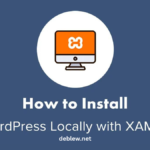Freelancing has emerged as a popular career choice in recent years, offering individuals the flexibility to work on their terms and pursue their passions. Many people wonder, “Can I do freelancing with a job?”
The answer is a resounding yes! In this comprehensive guide, we will explore the possibilities and strategies for successfully juggling freelancing alongside a full-time job.
Whether you’re seeking additional income, professional growth, or simply want to explore your creative side, freelancing can be a rewarding endeavour. So, let’s dive in and uncover the secrets to balancing freelancing with a job.
Why Consider Freelancing Alongside a Job?
Freelancing offers numerous advantages that make it an attractive option for individuals with a full-time job. It provides a platform to pursue personal interests, explore new opportunities, and generate additional income.
By leveraging your skills and expertise, you can embark on exciting freelance projects that align with your passions. Moreover, freelancing allows you to broaden your professional network, enhance your skills, and gain valuable experience outside the confines of your regular job.
While there are certainly challenges involved in managing both freelancing and a job simultaneously, with careful planning and dedication, it is indeed possible to strike a balance. The next section delves into the pros and cons of freelancing with a job to help you make an informed decision.
Understanding the Pros and Cons
Before embarking on the freelancing journey alongside your job, it’s essential to weigh the pros and cons. By understanding the potential benefits and challenges, you can effectively manage your expectations and make the most of this endeavour.
The Pros
- Additional Income: Freelancing offers a fantastic opportunity to supplement your regular income. It allows you to leverage your skills and earn extra money, providing financial stability and flexibility.
- Skill Enhancement: Freelancing exposes you to diverse projects and clients, allowing you to enhance your skills and expand your knowledge. It offers a platform to explore different areas of expertise and gain valuable experience.
- Flexibility: Unlike a traditional job, freelancing provides the freedom to choose when and where you work. This flexibility enables you to maintain a work-life balance, pursue personal interests, and cater to individual preferences.
- Professional Growth: By freelancing alongside your job, you can develop a wider professional network, connect with industry experts, and create opportunities for career advancement. It opens doors to new possibilities and can enhance your long-term prospects.
- Creative Freedom: Freelancing allows you to work on projects that align with your passions and interests. You have the autonomy to choose clients and projects that resonate with you, enabling you to unleash your creativity and enjoy your work.
The Cons
- Time Management: Balancing a job and freelancing requires excellent time management skills. You must be diligent in allocating time for both commitments, ensuring neither suffers from neglect.
- Workload Strain: Taking on additional freelance projects means an increased workload. It’s crucial to assess your capacity realistically and avoid overcommitting yourself, as it can lead to stress and burnout.
- Client Acquisition: Finding clients and securing freelance projects requires effort and consistent marketing. It may take time to build a reliable client base and establish a steady stream of work.
- Conflict of Interest: Depending on your job and industry, there may be conflicts of interest between your employer and freelance clients. It’s vital to clarify any potential conflicts and ensure compliance with your employment agreement.
- Work-Life Balance: Juggling a job and freelancing can sometimes encroach upon personal time and relationships. It’s crucial to strike a healthy work-life balance to avoid exhaustion and maintain overall well-being.
Understanding these pros and cons can help you make an informed decision about whether freelancing with a job is the right path for you. Now, let’s move on to identifying your freelancing niche.
Identifying Your Freelancing Niche
To excel in the freelancing world, it’s essential to identify your niche and focus your efforts accordingly. By honing in on your specific area of expertise, you can stand out from the competition and attract clients who value your skills.
Here are some steps to help you identify your freelancing niche:
- Evaluate Your Skills: Take an inventory of your skills, experiences, and passions. Identify areas where you excel and have a deep understanding. Consider both technical skills and soft skills that may be valuable in the freelance market.
- Research the Market: Conduct thorough market research to identify areas of high demand and growth. Look for gaps where your skills can add value and meet the needs of potential clients. Explore online job platforms, industry forums, and professional networks to gather insights.
- Consider Your Interests: Choose a niche that aligns with your interests and passions. Working on projects that genuinely excite you will not only keep you motivated but also enable you to deliver exceptional results.
- Analyze Competition: Assess the competition within your chosen niche. Identify successful freelancers and study their strategies. Look for ways to differentiate yourself and offer a unique value proposition to potential clients.
By following these steps, you can narrow down your freelancing niche and position yourself as an expert in a specific area. This focus will attract clients who are seeking your specialized skills, increasing your chances of success.
Building Your Freelancing Portfolio
A compelling portfolio is a crucial tool for freelancers to showcase their skills, experience, and achievements. It serves as a powerful marketing asset that establishes your credibility and helps you win clients. Building an impressive portfolio requires careful planning and attention to detail.
Here are some tips for creating an outstanding freelancing portfolio:
- Select Your Best Work: Carefully curate your portfolio to include your best and most relevant work samples. Choose projects that highlight your skills and expertise within your freelancing niche.
- Diversify Your Portfolio: Demonstrate your versatility by including a variety of projects that showcase different aspects of your capabilities. This will give potential clients a comprehensive view of your skills and increase your appeal.
- Provide Detailed Descriptions: Accompany each portfolio item with a detailed description, explaining the project objectives, your role, and the outcomes achieved. Use specific metrics and examples to quantify your impact whenever possible.
- Include Testimonials: Request testimonials from satisfied clients and include them in your portfolio. Testimonials add social proof and instil trust in potential clients, assuring them of your professionalism and capabilities.
- Keep it Visually Appealing: Design your portfolio to be visually appealing and easy to navigate. Use high-quality images, engaging graphics, and an intuitive layout that enhances the user experience.
- Optimize for SEO: Incorporate relevant keywords throughout your portfolio to improve its visibility in search engine results. This will increase the likelihood of potential clients discovering your work organically.
By following these guidelines, you can create a captivating freelancing portfolio that grabs the attention of potential clients and convinces them of your abilities. Now, let’s move on to the art of managing time effectively when balancing freelancing and a job.
Managing Time Effectively
One of the most significant challenges of freelancing with a job is managing your time efficiently. Effective time management is crucial to ensure that both your job and freelance commitments receive the attention they deserve. By implementing smart strategies, you can maximize productivity and maintain a healthy work-life balance.
Consider the following time management tips:
- Create a Schedule: Develop a schedule that outlines your availability for freelancing. Identify specific blocks of time dedicated solely to freelance work, and stick to this schedule as closely as possible. This structure will help you allocate time efficiently and avoid overlapping commitments.
- Prioritize Tasks: Prioritize your tasks based on urgency and importance. Focus on high-priority projects that have immediate deadlines or significant impact. By staying organized and tackling tasks in order of priority, you can ensure that critical work is completed on time.
- Utilize Time Blocking: Time blocking involves dedicating specific blocks of time to focus on a particular task or project. By blocking off uninterrupted time for freelancing, you can eliminate distractions and make substantial progress on your work.
- Set Realistic Deadlines: When taking on freelance projects, ensure that you negotiate deadlines that are achievable within your available time. Be honest with clients about your schedule and establish realistic expectations from the start. This will prevent undue stress and allow you to deliver high-quality work.
- Eliminate Time Wasters: Identify and eliminate activities that consume excessive time without adding significant value. Minimize distractions such as excessive social media use or non-essential meetings. By optimizing your time, you can accomplish more in fewer hours.
- Delegate and Outsource: If possible, delegate non-core tasks or outsource certain aspects of your freelance work. For example, you can hire a virtual assistant to handle administrative tasks, allowing you to focus on high-value work.
By implementing these time management strategies, you can optimize your productivity and effectively manage both your job and freelancing commitments. Setting realistic goals is another essential aspect of balancing these two spheres of work.
Setting Realistic Goals
Setting clear and realistic goals is crucial when balancing freelancing with a job. Goals provide direction, motivation, and a framework for measuring your progress. By defining your objectives, you can align your efforts and stay focused on what matters most.
Consider the following tips for setting realistic goals:
- Be Specific: Set specific goals that are clear and well-defined. Avoid vague statements and instead, focus on actionable objectives. For example, instead of saying “Increase freelance income,” specify the exact amount or percentage you aim to achieve.
- Make Them Measurable: Ensure your goals are measurable, allowing you to track your progress. Use quantifiable metrics such as revenue, number of clients, or completed projects to assess your achievements objectively.
- Break Them Down: Break down your larger goals into smaller, manageable milestones. This approach makes them less overwhelming and allows you to celebrate incremental successes along the way.
- Set Timeframes: Assign realistic timelines to your goals to create a sense of urgency and accountability. Be mindful of your existing job commitments and other personal responsibilities when determining feasible timeframes.
- Consider Constraints: Factor in the limitations and constraints you may face when setting your goals. Take into account your available time, resources, and energy levels. Setting goals that align with your constraints will increase your chances of success.
- Review and Adjust: Regularly review your goals and assess your progress. If necessary, adjust your goals based on changing circumstances or newfound insights. Flexibility is essential in adapting to the dynamic nature of freelancing and a job.
By setting realistic and meaningful goals, you can stay motivated, measure your progress, and make informed decisions regarding your freelancing journey. The next section explores the significance of establishing a solid online presence as a freelancer.
Establishing a Solid Online Presence
In today’s digital age, having a strong online presence is essential for freelancers. It serves as a platform to showcase your skills, build your brand, and attract potential clients. By establishing a solid online presence, you can enhance your credibility and increase your visibility in the freelancing market.
Consider the following strategies to establish a robust online presence:
- Create a Professional Website: Develop a professional website that showcases your portfolio, skills, and contact information. Your website should have a clean design, be easy to navigate, and highlight your unique selling propositions.
- Optimize for Search Engines: Implement search engine optimization (SEO) techniques to ensure that your website ranks higher in search engine results. Research relevant keywords and incorporate them strategically throughout your website content.
- Leverage Social Media: Utilize social media platforms such as LinkedIn, Twitter, and Instagram to amplify your online presence. Share your work, engage with industry peers, and build a network of potential clients. Each social media platform offers unique benefits, so tailor your approach accordingly.
- Participate in Online Communities: Join online communities, forums, and industry-specific groups to connect with like-minded professionals. Contribute valuable insights, answer questions, and establish yourself as an authority in your field. This can lead to collaborations and referrals.
- Guest Blogging and Content Marketing: Contribute guest blog posts to reputable websites and publications within your industry. This helps you gain exposure to a broader audience and positions you as a thought leader. Additionally, create and share valuable content on your blog or through platforms like Medium to demonstrate your expertise.
- Collect and Display Testimonials: Request testimonials from satisfied clients and display them prominently on your website and social media profiles. Testimonials serve as social proof and instil confidence in potential clients.
By implementing these strategies, you can establish a strong online presence that showcases your skills, builds your reputation, and attracts clients. However, it’s essential to maintain motivation and avoid burnout while freelancing with a job.
How Can I Maintain Motivation and Avoid Burnout while Freelancing a Job?
Maintaining motivation and avoiding burnout is crucial when juggling a job and freelancing simultaneously. The demands of both commitments can sometimes lead to exhaustion and decreased productivity. However, with the right strategies, you can stay motivated and protect your well-being.
Consider the following tips to maintain motivation and prevent burnout:
- Set Realistic Expectations: Be realistic about what you can accomplish within the available time and energy. Set achievable goals and avoid overwhelming yourself with excessive workloads.
- Take Breaks: Allow yourself regular breaks to rest and recharge. Stepping away from work, even for short periods, can help clear your mind and increase productivity when you return.
- Practice Self-Care: Prioritize self-care activities that promote physical and mental well-being. Engage in regular exercise, maintain a healthy diet, get enough sleep, and allocate time for hobbies and relaxation.
- Celebrate Milestones: Acknowledge and celebrate your achievements along the way. Recognizing your progress, no matter how small boosts motivation and provides a sense of accomplishment.
- Seek Support: Surround yourself with a supportive network of friends, family, or fellow freelancers who understand the challenges you face. Lean on them for encouragement, advice, and a listening ear when needed.
- Learn to Say No: Be selective about the freelance projects you take on. It’s okay to decline opportunities that don’t align with your interests, schedule, or goals. By saying no to projects that don’t fit, you create space for those that do.
By implementing these strategies, you can maintain motivation, avoid burnout, and find joy in both your job and freelancing endeavours. Now, let’s move on to some frequently asked questions about freelancing with a job.
FAQs
Can I do freelancing with a job?
Yes, it is possible to freelance while having a full-time job. However, it requires effective time management, dedication, and careful planning to strike a balance between the two.
How do I find freelance projects while working a job?
Finding freelance projects while working a job requires proactive marketing and networking. Utilize online job platforms, industry-specific websites, and professional networks to search for opportunities. Additionally, leverage social media and personal connections to expand your reach and attract potential clients.
How much time should I dedicate to freelancing?
The amount of time you dedicate to freelancing depends on your availability, energy levels, and personal commitments. Assess your schedule realistically and determine how many hours you can allocate to freelance work without compromising your job performance or personal life. It’s crucial to strike a healthy balance that suits your circumstances.
Should I inform my employer about my freelancing activities?
It’s essential to review your employment contract and company policies to understand any restrictions or conflicts of interest regarding freelancing. Some employers may require disclosure, while others may prohibit it altogether. It’s crucial to adhere to your employer’s guidelines and avoid any potential conflicts.
How can I manage my finances as a freelancer with a job?
As a freelancer, it’s important to manage your finances effectively. Create a separate bank account for your freelance income and expenses, track your earnings and expenses diligently, and set aside funds for taxes. Consider consulting with a financial advisor or accountant to ensure you meet your financial obligations and make informed decisions.
Can freelancing with a job lead to a full-time freelance career?
Yes, freelancing with a job can serve as a stepping stone to a full-time freelance career. As you build your skills, portfolio, and client base, you may reach a point where you can transition to freelancing full-time. However, this decision should be based on a careful evaluation of your financial stability, market demand, and personal circumstances.
Conclusion
Freelancing with a job can be a fulfilling and rewarding journey if approached with careful planning, time management, and dedication. By identifying your freelancing niche, building a compelling portfolio, setting realistic goals, establishing an online presence, and maintaining motivation, you can successfully balance both worlds.
Remember to optimize your time, prioritize tasks, and communicate effectively with clients and employers. Keep an eye on your well-being, seek support when needed, and celebrate your achievements along the way. With perseverance and a strategic approach, you can thrive as a freelancer while managing your job responsibilities.







